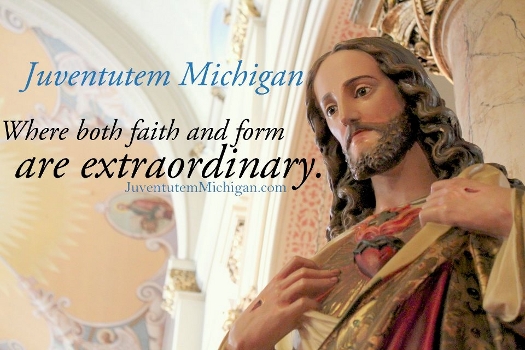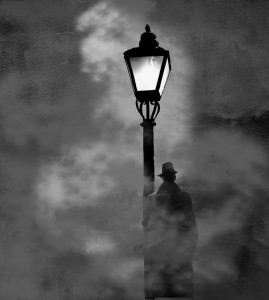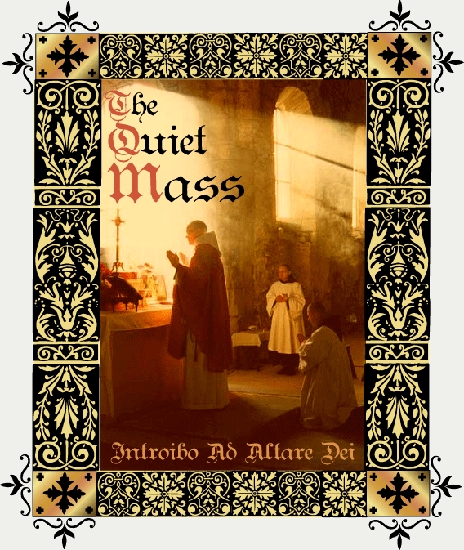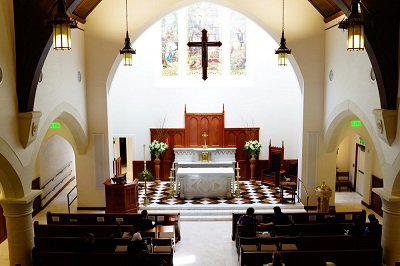By Kenneth D. Whitehead
In July-August 2001, Kenneth D. Whitehead, R.I.P., a former U.S. Assistant Secretary of Education, was a writer living in Falls Church, Virginia, and a Contributing Editor of the NOR. His latest book was One, Holy, Catholic, and Apostolic: The Early Church Was the Catholic Church (Ignatius, 2000).

Ed. Note: Throughout 2017, in commemoration of our fortieth year of publication, we are featuring one article per issue from the NOR’s past. This article originally appeared in our July-August 2001 issue (volume LXVIII, number 7) and is presented here unabridged. Copyright © 2001.
Ideological slogans might not always seem to be very important. Sometimes, however, they can reveal basic and persistent mindsets. This is the case with the slogan that originated in the French Revolution, “No enemies to the Left.” Students of European politics will recognize that this slogan has persisted, and that the ideas behind it still apply to today’s politics.
In his 1928 classic,
The French Revolution: A Monarchist History, Pierre Gaxotte describes the inexorable logic of revolutionary “progress”:
The revolutionary period was characterized by allowing successive avant-garde parties or factions to take political power while riots and disturbances in the streets dictated the actual government policies that were adopted. Against the royal court and the privileged classes, the members of the National Assembly appealed to the turbulent sectors of the capital. Even while privately deploring the excesses committed from July 13 on, they closed their eyes to them because they wanted to hold in reserve the power of the clubs and of the streets. Thus they became prisoners of the alliance they had made; they became prisoners of the formula “no enemies to the left” (pas d’ennemis à gauche).
The relative moderates initially responsible for getting the Estates General convoked in order to deal with the financial crisis of the French monarchy were very soon shunted aside by the more radical elements, who quickly resorted to extra-legal means to convert the Estates General into a National Assembly. These revolutionaries in the Assembly soon fell from power, however, giving way to yet more radical elements. Each successive party or faction that came to power faced the same ongoing, volatile revolutionary situation.
Continuing agitation in the country at large, but especially in Paris, kept the streets, the press, the factions, and the clubs in constant ferment. What was taken to be public opinion marched relentlessly forward. Yesterday’s impossible, unthinkable measure became today’s “idea whose time has come”; yesterday’s progressive Assembly member became today’s reactionary, if not traitor to the cause. The revolutionary mechanism ground mercilessly on.
Gaxotte correctly identifies one of the reasons why the more radical revolutionary elements were repeatedly able to displace the successively outmoded “progressives”: In a revolutionary climate, where events are thought to be leading ineluctably to human “liberation,” a “better world,” and the perfecting of the human condition, the more radical forces not only exhibit more consistency and determination toward attaining these ends, they also come to occupy the perceived moral high ground — they are the ones who appear truly dedicated to the cause, and thereby usually gain at least short-term popular support. Meanwhile, those who are more moderate and potentially more reasonable become awed or intimidated by the zeal of the zealots and tend to yield to them.
If, by definition, the Revolution is going to usher in freedom, eliminate oppression and injustice, and create a better world, then those who are more committed, energetic, and intolerant of any kind of compromise with injustice and oppression acquire a considerable psychological and moral advantage — while those who are or have become more lukewarm about the cause, or who, at the very least, have become concerned about their jobs or careers, can no longer effectively oppose the zealots and the true believers.
It is true that power relationships and the abilities and opportunities of individuals, as well as a host of other factors, play important roles in how a particular revolutionary situation develops; but if the whole aim of the Revolution is to clear away the obstacles on the road to human liberation, progress, and a better world, then those least deterred by moral or other considerations in the face of the obstacles encountered will be out in front of others who might have second thoughts, or even scruples, or who are otherwise deterred by various obstacles.
These are among the reasons why, in a revolutionary situation, there are “no enemies to the Left.” For it is the Left, after all, that by definition represents where the Revolution is supposed to go.







 Another underground agent, let's call him "Guy Rouge - private eye," writes:
Another underground agent, let's call him "Guy Rouge - private eye," writes:




 After meandering through a number of typically learned and eloquent distractions, the irrepressible Fr. Rutler comes round to his thesis: how the Catholic Charismatic movement, like the Montanist enthusiasms of the ancient Church, is a heretical distortion. While "not unsympathetic toward the noble integrity of John Wesley," he writes, Monsignor Ronald Knox, in his masterwork entitled Enthusiasm, "holds up the spiritist movements from the second century Montanists to the latter day Quakers, Jansenists, and Quietists as examples of how people go to extremes to confuse themselves emotionally with the Holy Spirit."
After meandering through a number of typically learned and eloquent distractions, the irrepressible Fr. Rutler comes round to his thesis: how the Catholic Charismatic movement, like the Montanist enthusiasms of the ancient Church, is a heretical distortion. While "not unsympathetic toward the noble integrity of John Wesley," he writes, Monsignor Ronald Knox, in his masterwork entitled Enthusiasm, "holds up the spiritist movements from the second century Montanists to the latter day Quakers, Jansenists, and Quietists as examples of how people go to extremes to confuse themselves emotionally with the Holy Spirit."
 I'm not sure the discourse of the Holy Father rises (or 'sinks') to the level of academic abstraction sufficient to qualify him as a 'Postmodernist,' but when you read some of the seemingly hyperbolic praise he heaps on the
I'm not sure the discourse of the Holy Father rises (or 'sinks') to the level of academic abstraction sufficient to qualify him as a 'Postmodernist,' but when you read some of the seemingly hyperbolic praise he heaps on the likes of nihilistic Postmodern writers like Michel de Certeau (right), you can see how someone might come up with an article like that of the pro-life activist, Fred Martinez, "
likes of nihilistic Postmodern writers like Michel de Certeau (right), you can see how someone might come up with an article like that of the pro-life activist, Fred Martinez, "


 Ed. Note: Throughout 2017, in commemoration of our fortieth year of publication, we are featuring one article per issue from the NOR’s past. This article originally appeared in our July-August 2001 issue (volume LXVIII, number 7) and is presented here unabridged. Copyright © 2001.
Ed. Note: Throughout 2017, in commemoration of our fortieth year of publication, we are featuring one article per issue from the NOR’s past. This article originally appeared in our July-August 2001 issue (volume LXVIII, number 7) and is presented here unabridged. Copyright © 2001.

